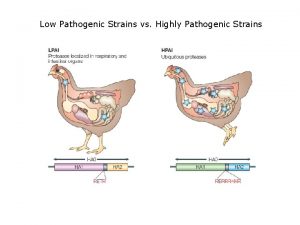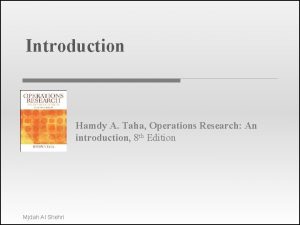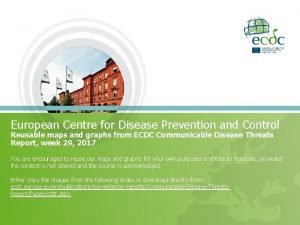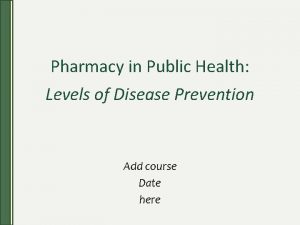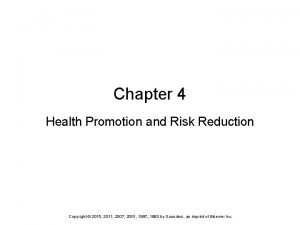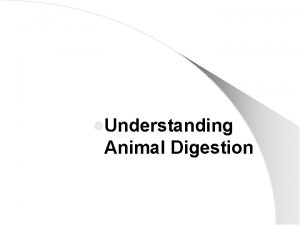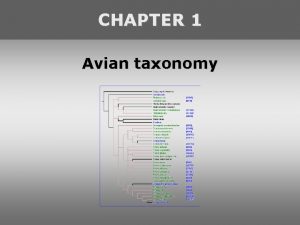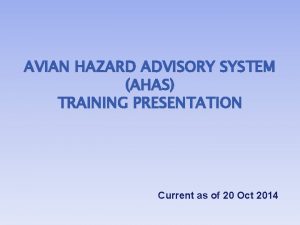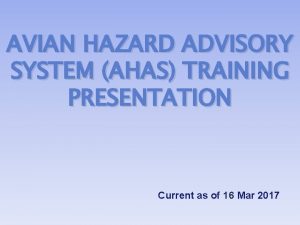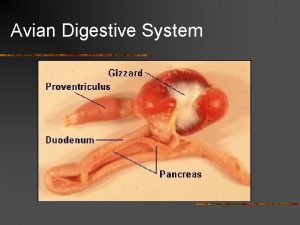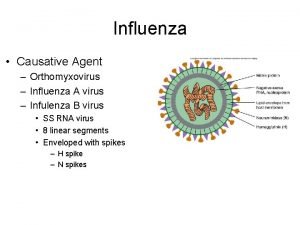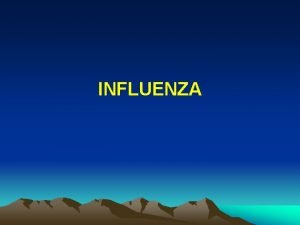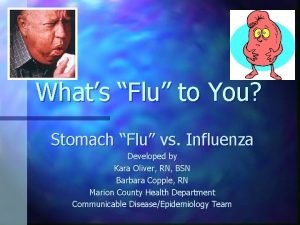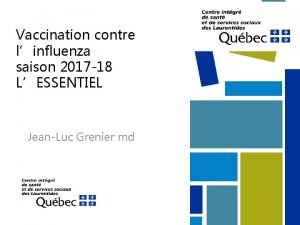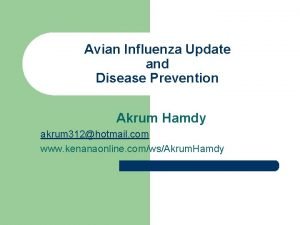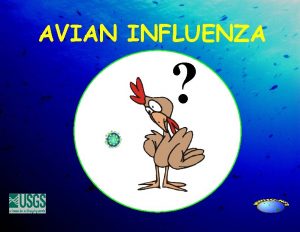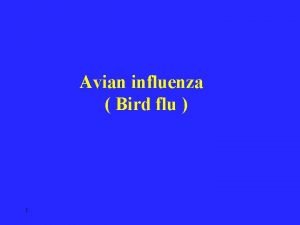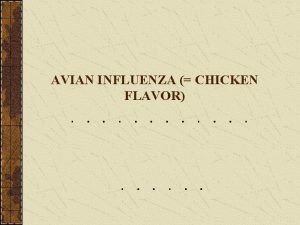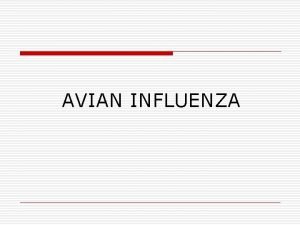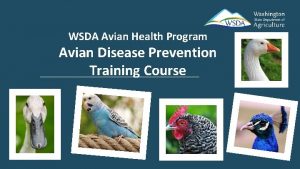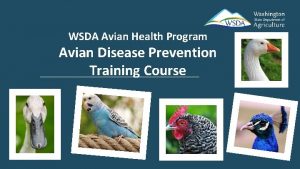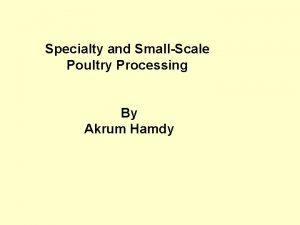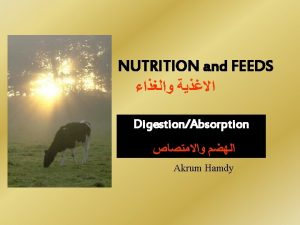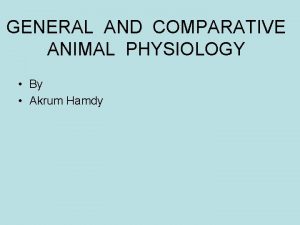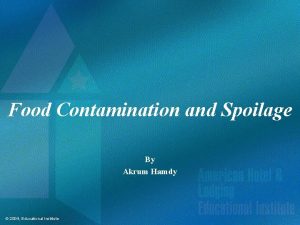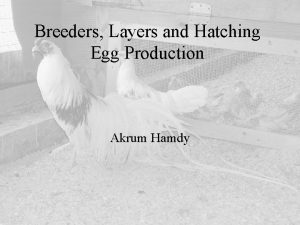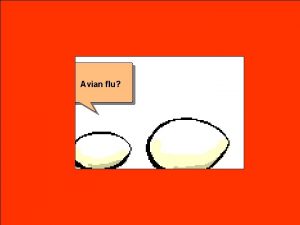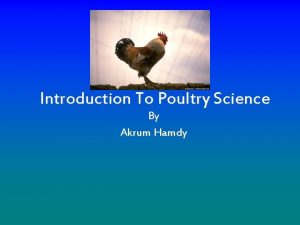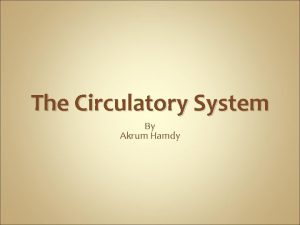Avian Influenza Update and Disease Prevention Akrum Hamdy






























- Slides: 30

Avian Influenza Update and Disease Prevention Akrum Hamdy akrum 312@hotmail. com www. kenanaonline. com/ws/Akrum. Hamdy

Avian Influenza in the US is NOT the same Virus as “Bird” Flu in Asia

Avian Influenza Nomenclature Birds: Influenza A type virus Influenza A is divided into Subtypes based on their surface proteins: Hemagglutin (HA): 16 subtypes Neuraminidase (NA): 9 subtypes H 5 N 1



Influenza Virus (Flu) l l l Mammals and birds always have flu viruses circulating in their respective populations Horses, Hogs, Humans, and Birds are just a few of the species that are susceptible to flu viruses Flu viruses generally stay within species There are some exceptions like Swine flu, which resides in hogs but can infect turkeys Flu viruses are always changing, that’s why the human vaccine changes yearly

Avian Influenza (AI) l l l North America has always had Avian Influenza strains circulating in waterfowl, wild birds, and live bird markets “Asian Bird Flu”(H 5 N 1) is one of many strains of Avian Influenza Poultry companies and all producers should be concerned about all avian influenza strains, not just “Asian Bird Flu”

Some Perspective on Asian Bird Flu (H 5 N 1) l l Less than 110 people have died from “Asian Bird Flu” and less than 200 are known to have gotten sick out of 3. 7 Billion people in Asia It is not contagious between people People afflicted with this disease had very close contact with sick birds (live with them, butchered and ate products from sick birds. ) It has been known to be in Asia since 1997 but recently has moved into Africa and Europe

Asian Bird Flu (H 5 N 1) infects birds easily but does not infect people easily

Factors in Asia that have facilitated H 5 N 1 Infection l l l Eastern Asia has the most poultry and people living in very close proximity Unsanitary conditions Live Bird (Wet) Markets are a primary source for poultry in cities Sick animals are likely to be eaten by impoverished people Consumption of uncooked meat or poultry products (such as raw blood) Cockfighting (highly mobile)

Asian Bird Flu(H 5 N 1) l l l This is not a subtle disease in birds It kills birds very quickly and in large numbers (90% plus) With few exceptions, cases have been in live markets, free roaming birds or birds kept in primitive conditions

Areas outside Asia EU Most of the outbreaks have been single incidences in wild birds (Swans, Tufted Ducks) Record cold in Eastern Europe may have disrupted normal winter nesting areas Three outbreaks in poultry (France, Germany and Sweden EU approved vaccination of birds in France and Netherlands Move birds inside in affected areas

Areas outside Asia Middle East l Wild Birds and Poultry l Change in Migratory routes l Egypt hiding of sick birds lead to human illness Africa l Small village flocks

What is being done in US Voluntary (mandatory) surveillance program Must test for exports l Mandatory surveillance of live bird markets in NY, NJ and east coast l Expansion of surveillance to all poultry events including shows, swap meets, flea markets and auctions l Increase awareness among poultry health officials and state officials l USDA increase information to small flocks producers l Import ban on poultry from Asia and affected areas l

Why aren’t we vaccinating our chickens for Asian Bird Flu? l l Historically, vaccinating for AI meant that a country was not serious about eradication US Poultry relies heavily on exports: Breast meat stays in domestic markets, Leg quarters go overseas U. S. companies believe that trade barriers would be imposed if U. S. vaccinated for AI Overseas opposition to vaccination may vanish as more countries vaccinate for “Asian Bird Flu”

Disease Prevention Disease is any departure from normal

How are diseases spread • Infected Birds • Carrier Birds • Human vectors • Mechanical vectors • Contaminated Feed or Water • Wild Birds and Animals • Rodents and Insects • Dead Birds • Manure

Biosecurity To protect from a biological threat

Biosecurity The Benefits of Biosecurity • Helps keep out diseases • Reduces the risks • Limits the spread of disease • Improves overall health of the flock • Reduces mortality losses • Improves profitability

Biosecurity is not all about AI, there are many diseases that need to be prevented Bursal Disease Months Coccidosis Months Fowl Cholera Weeks Fowl Coryza Days Influenza Weeks LT Days Marek’s Disease Weeks Newcastle Weeks Mycoplasmosis Days Salmonellosis Weeks

Biosecurity • Control the things that you can control • Identify the things outside your control • Let others know about the things outside your control

Biosecurity W’s • Who is on your farm • What is brought on to your farm • When are they there • Where have they been • Why are they there

Biosecurity Control the Facility • Post warning signs • Lock buildings • Log book of visitors to the farm • Do not be afraid to ask where they have been • Take measures to prevent contamination (boots are the minimum) • Family and friends are visitors

Biosecurity Where have you been? • You may be your own biggest risk • Personal Hygiene (wash your hands) • Designated Clothes and boots for the poultry houses • How clean are the floor boards of your truck? • The corner store/restaurants/hardware store • Have you been near birds (hunting, farm ponds, pet stores, zoos, parks)

Biosecurity Birds of a Feather • Waterfowl are a threat • Wild birds need to be kept out of the poultry houses and pens • Avoid other small flocks, shows, sales, flea market • Isolate birds returned or new to farm (30 days) • Hatching eggs or chicks less risk • If you know of a poultry show or sale in your area contact the Office of the State Veterinarian • Clean up spilled grain and feed

Biosecurity Rodents, Animals and Insects • The only animal that needs to be in a chicken house and pens is a chicken • Active rodent control (bait stations and fresh bait) • Clean up spilled grain and feed • Mow around the houses, pens and weed control • Keep your dogs and cats out of the poultry houses • Insects carry disease

Biosecurity Mortality • Be aware of changes in mortality patterns • Observe the birds • Collect dead birds frequently • Dispose of them in a proper way • Unusual mortality or disease symptoms seek professional help

Biosecurity Shared Equipment and Vehicles • Clean and Disinfect shared equipment between farms • Establish a wash area away from the poultry buildings • Log the events

What can small producers do? • Biosecurity • Personal Hygiene Wash your hands, Wash your hands • Separate clothes and boots for the poultry • Protective gear if creating an aerosol • Be aware of where you have been • Get sick birds to a diagnostic lab • If you have a poultry event schedule in your county let the State Veterinarian Office know.

Biosecurity “Doing the little things now may prevent the need to do major things later”
 Low pathogenic avian influenza
Low pathogenic avian influenza Primary prevention secondary prevention tertiary prevention
Primary prevention secondary prevention tertiary prevention Hamdy a taha operations research
Hamdy a taha operations research Is influenza a airborne disease
Is influenza a airborne disease Shadow paging recovery technique
Shadow paging recovery technique Puncture resistant container
Puncture resistant container Chapter 26 infectious disease prevention and control
Chapter 26 infectious disease prevention and control Chapter 19 disease transmission and infection prevention
Chapter 19 disease transmission and infection prevention European centre for disease prevention and control
European centre for disease prevention and control Health promotion and levels of disease prevention
Health promotion and levels of disease prevention Chapter 19 disease transmission and infection prevention
Chapter 19 disease transmission and infection prevention Health promotion and levels of disease prevention
Health promotion and levels of disease prevention Polygastric examples
Polygastric examples Avian taxonomy
Avian taxonomy Avian ku ethnicity
Avian ku ethnicity Paraphrasing proverbs
Paraphrasing proverbs Avian hazard advisory system
Avian hazard advisory system Bam ahas
Bam ahas Bird digestive system functions
Bird digestive system functions Dispersal definition
Dispersal definition Avian taxonomy
Avian taxonomy Enantiornithes
Enantiornithes Bharathi viswanathan
Bharathi viswanathan Spinte metallostatiche
Spinte metallostatiche The causative agent of influenza
The causative agent of influenza The great influenza rhetorical analysis
The great influenza rhetorical analysis Olfactory mucosa
Olfactory mucosa Influenza
Influenza Stomach flu vs influenza
Stomach flu vs influenza Fibertel
Fibertel Influenza vaccine dosage chart 2019-2020
Influenza vaccine dosage chart 2019-2020
